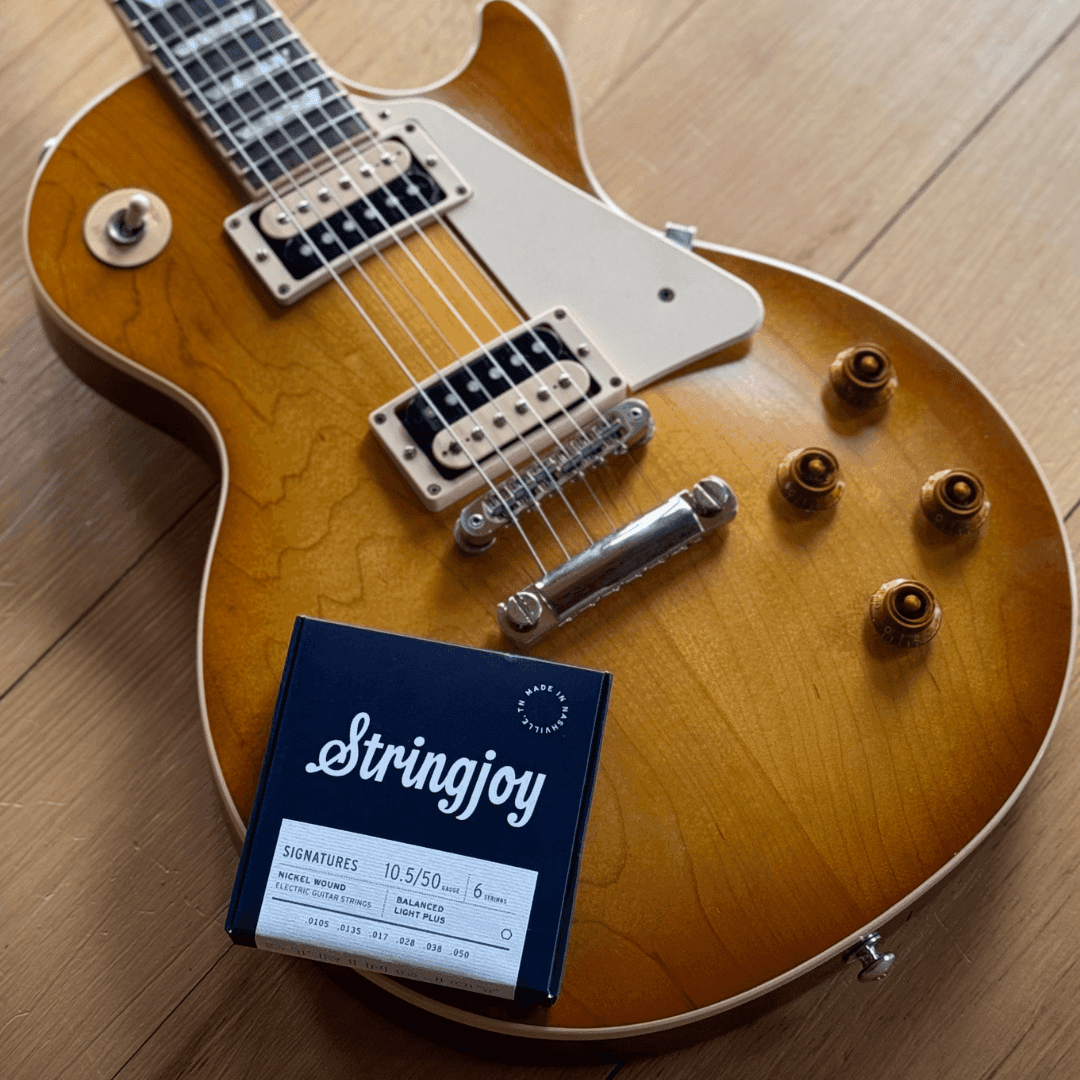How Was the Humbucker Invented?


From Joe Pass to Slash, the humbucker pickup is an iconic piece of gear that has helped countless guitarists dial in their perfect tone. Their sound is known all over the world, and they are one of the most popular pickups for guitarists—and it’s not hard to see why.
Humbucker pickups have a unique tone that has empowered guitarists for generations. For jazz players and people who want clean tones, humbuckers eliminate the noisy hum and give you a more pure sound. They have rich lows and smooth mids and highs that make for a great tone. For rock players, humbuckers provide more sensitivity and a higher output that makes them perfect overdriven and distorted tones. And for players that desire versatility, humbuckers can be used in a variety of contexts depending on the rest of your gear.
But humbuckers haven’t always been around, and there was a time when the only option available to guitar players were single-coil pickups. So how was the humbucker invented? Keep reading to find out and learn more about the surprising history of the humbucker pickup.

What’s That Hum?
First, let’s try to understand why the humbucker pickup was invented. Guitars with pickups first started to pop up in the 1930s, though these were mainly lap steel and hollow body models. It wasn’t until Leo Fender introduced the Fender Esquire (later renamed the Broadcaster, then the Telecaster) that solid body electric guitars began to catch on.
The Telecaster and the later Stratocaster both came with a configuration of single coil pickups. Fender's guitars performed incredibly for the time, and collectors revere them today. But there was an issue—hum.
The single coil pickups used in Fender guitars were noisy, and they were susceptible to electronic interference (such as radio waves) and produced a noticeable amount of hum. The tone they produced was great, but their noisy nature was an issue for many guitarists and gearheads. This is what inspired two other guitar pioneers to innovate and create the humbucker pickups we all know and love today.
How Was the Humbucker Invented?
Humbucker pickups actually date back farther than you’d think; Electro-Voice made the earliest humbuckers in 1934. Electro-Voice designed the pickups for other audio equipment though, not guitars. Eventually, this idea would inspire Ray Butts of Gretsch and Seth Lover of Gibson to create their own humbuckers.
The principle behind humbucker pickups is actually fairly simple. Two single-coil pickups are attached to each other, and the magnetic direction and coil direction of one pickup is reversed. This results in phase cancellation "bucking" the hum, giving us the humbucking pickup.
Humbucker pickups produce much less noise than their single coil counterparts, and they also have a unique tone that is different from single coil pickups. Humbuckers typically have more output than single-coil pickups, which results in pickups that have a wider sonic window and more volume overall. That means you have the ability to more easily push a tube amp into breakup territory, getting powerful overdriven tones.
Humbuckers have more warmth and smoothness than single-coil pickups, though they are still bright depending on their use. They perform well for overdriven and distorted tones, giving them a bit more power and bite. That said, they also work great for clean sounds, as is evident by the number of jazz players who use humbuckers.
With all that in mind, let’s move from how was the humbucker invented to the creation of the humbuckers we are all familiar with today.
Gibson or Gretsch?
There has long been a debate about who created the first humbucking pickup for guitar; was it Seth Lover of Gibson, or was it Ray Butts of Gretsch? Gibson and Lover applied for their patent two years before Butts in 1955, but Butts’ patent was granted four weeks before Gibson and Lover’s. So who was first?
Though many still fiercely debate who was first, most agree that they both came up with their ideas independently of each other. It is incredible that both of them came up with the same idea at around the same time, but executed it differently. Both Lover’s and Butts’ pickups work on the same principle, yet they are remarkably different from each other. So how was the humbucker invented by each of them? Let’s find out.
Patent Applied For (PAF)
Seth Lover’s humbucker became known as the PAF. He marked the pickups with “patent applied for,” and the name stuck. The PAF is to this day one of the most popular pickups on the market, and many consider the original PAF design to be a “holy grail” of tone.
PAFs were based on the same basic premise explained earlier—two single coils wound in reverse with opposite polarity, placed side by side and wired in series. However, Lover made additions to this basic formula to make the PAFs even better. He added a metal cover to reduce electrostatic interference, Alnico magnets, and more. The result was a high output pickup that bucked the hum of single coils, all while providing an unmistakable tone.
Lover’s PAFs quickly became a crucial part of rock and roll and are known for their rich, full, and uncompressed sound. They are less bright than single coils, but they still have clear and crisp mids and highs. They also have a lot of clarity and sensitivity due to being hum free, which made them very popular for rock musicians such as Keith Richards, Jimmy Page, Eric Clapton, Mike Bloomfield, and more.

It's also of note that Lover did not wax-pot the original PAFs like most modern pickups, meaning that they are microphonic and will pick up bumps, taps, and knocks on the guitar. Many believe that this adds resonance to the guitar and betters the overall sound. However, most modern manufactures wax-pot their PAFs.
Filter'Tron
Butts named his humbucker the Filter’Tron. Butts actually created the pickup specifically for country guitar legend Chet Atkins, who famously played Gresch guitars. While Filter’Trons operate on the same basic principles of the PAF, they are incredibly different from PAFs.
Filter'Trons are humbuckers, but they are actually sort of in between a humbucker and a single coil. Their output is much lower than a PAF, closer to a modern single coil pickup. They are smaller overall than PAFs, meaning their pole pieces being closer together. At the same time, the magnet in the Filter'Tron is twice the size of that in a PAF. This all results in a pickup with a more focused, clear, and bright sound.

Players know Filter’Tron pickups for their versatility. They have the warmth and humbucking nature of PAFs, but they retain the brightness and clarity of single-coil pickups. Guitarists can use Filter'Trons for incredible and stunning clean tones (as heard on this Julian Lage recording). When overdriven, they become the quintessential rockabilly sound as heard on countless Brain Setzer recordings. Guitarists can also use them for more aggressive rock styles; Neil Young famously plays a Gretsch White Falcon, and its Filter’Trons produce powerful distorted tones on tracks like Alabama and Words Between the Lines of Age.
Filter’Trons are a great option for players looking for a sound in between a humbucker and single coil. You can get the warmth and humbucking benefit of a humbucker, but with the clarity and brightness of a single coil. It is remarkable how unique Filter’Trons are, especially when compared to Lover’s PAFs of the same time. They are a testament to the creativity and inventiveness of Ray Butts, and an important part of the story of how was the humbucker invented.
The Results
Regardless of who created their pickup first, both the PAF and the Filter’Tron are incredible innovations that revolutionized the world of music. The story of how was the humbucker invented is a fascinating dive into the early history of American music. They opened up a whole new arsenal of tones for us guitar players to explore, and the sonic possibilities presented by humbuckers have inspired countless musicians to push the envelope and create revolutionary music.
From country and jazz to rock and metal, the humbucker pickup is an essential part of the modern musical landscape. Without them, the history of music as we know it may be completely different. And we have Seth Lover and Ray Butts to thank for their creativity and innovation that led to the creation of the humbucker.
Other Posts you may like

Guitar Strings Order: How the Guitar is Tuned and Why

Two Handed Tapping: Our Top 8 Tappers of All Time

Which Guitar Strings Wear Your Fret Wire Down More?

What is Nashville Tuning? Its History, Best Guitar Strings & Uses

Guitar Scale Length Explained: String Tension & Playability

What Guitar Strings I Used To Play...
0 Responses
Leave a Reply
Your email address will not be published. Required fields are marked *

